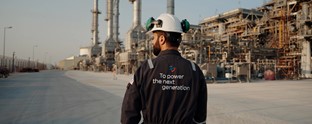Five minutes with Thomas Herman

Thomas Herman, co-founder and marketing director of creative agency Path, speaks to Transform magazine about all things sustainable. Herman discusses the steps to follow to make sure a brand experience is effective yet has minimal impact on the enviornment, the importance of packaging in terms of brand sustainability and how brands can leverage the e-commerce and D2C brand boom for the sake of sustainability.
What are the key steps to follow to make sure a brand experience is delivered across all touchpoints while making minimal impact on the environment?
To deliver a consistent and compelling brand experience, you must consider three things in equal measure: communication, performance and impact. Communication is about what kind of story your brand is trying to tell, and how you can use different touch points - digital, packaging, product design, in-store - to convey this message. Performance, on the other hand, considers how functional your touchpoints are in communicating this message, for example how well different packaging materials can capture your brand.
Lastly, impact concerns the effect your brand will have on the planet, from supply chains right through to end-of-life. However, too often this is considered an afterthought, deprioritised behind communication and performance. But in the age of the conscious consumer, this is not good enough. In order to deliver a truly sustainable brand experience across every touch point, designers and strategists must consider the environmental impact right from the outset, and prioritise the environment at the ideation stage.
What role does packaging play in a brand's journey to become more environmentally-friendly?
Simply put, packaging is fundamental. It is equally part of the product’s function as its communication and impact. Yet, packaging is also (usually) the most wasteful part of a brand, as it is the element discarded by the consumer and often forgotten about. As such, it’s important to prioritise designing packaging that has as low of a lifetime impact as possible.
Material selection goes a long way. I’ve seen fantastic materials made out of crustacean waste and recycled god-knows-what, but we already have such brilliant (and sustainable) materials at our fingertips - such as recycled PET or HDPE. I think the exciting challenge for creatives is to design within the constraints of the materials we already have, and find new ways to use these great resources to convey important brand messages.
How can you leverage the e-commerce and D2C brand boom for the sake of sustainability?
The new consumer landscape enables brands to follow the distribution of their product and resource to individuals. Materials can now more easily be tracked, returned and reused. This essentially erodes the middle man between brand and consumer, such as traditional retail models where physical materials are used in the promotion of products. On reflection, these seem extremely wasteful, and by cutting this out of the equation, a significant amount of unnecessary materials can be removed.
Designers now need to re-think their packaging to consider how it can either be easily refilled or recycled. One great example is Unilever’s refill vending machines, which allow shoppers in Chile to order refills by an app, which is delivered to their door by electric tricycles.
What are the biggest myths surrounding sustainable materials? What limitations do brands face when it comes to recycling?
The word ‘sustainable’ itself is the biggest myth. It is a relative term, not an absolute one. Too often are brands concerned with box-ticking exercises and claiming that they have ‘achieved’ sustainability. Unfortunately, nothing is truly sustainable - some element of waste or negative environmental impact will always occur. That’s why we need to re-think the idea of sustainability and celebrate the journey towards being better, rather than aiming for a mythical end point.
In terms of recycling limitations, one huge limitation is extended producer responsibility (EPR) policies that make manufacturers pay for management of the waste they create. This means that brands should think carefully about redesigning their products to fit within established waste systems we already have, rather than designing environmentally friendly products that are complicated to recycle. As ever, this is another difficult - yet exciting - challenge for designers to sink their teeth into.
What is Matlab and how does it help brands embrace sustainability?
Matlab is Path’s proprietary database where we record a wide range of different materials and surface finishes, and also investigate and review the sustainability story for each. There’s a mix of ‘established’ examples, as well as an exciting collection of new and developing opportunities. We use a mixture of images and written content to explain each one, with a downloadable pdf for each and clients can subscribe for access.












